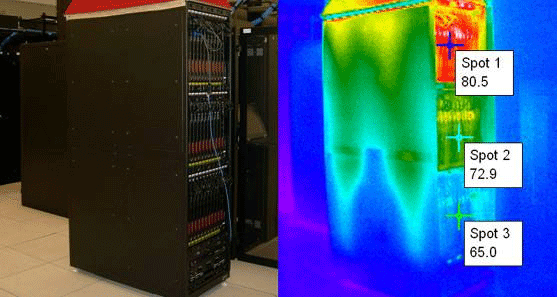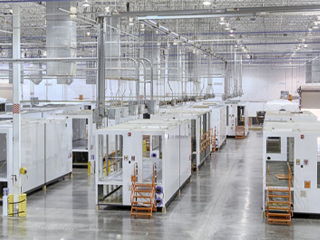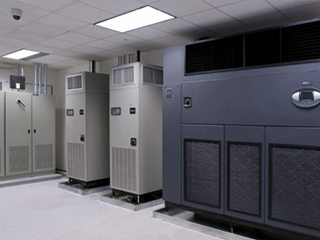Thermal imaging technology has long been used in many industries. It is often employed in large enterprises such as airports and energy facilities. Today, the use of thermal imaging technology is expanding to the data center industry. Experts have created more ways to reap the maximum benefit of this technology.
Temperature-sensitive facilities like data centers usually use thermal imaging technology. Monitoring the thermal conditions and cooling in the facility are essential aspects here. With the use of thermal imaging technology, organizations can do these tasks and effectively prevent issues that may lead to downtime in the facility.
Infrared imaging is used to visualize the thermal conditions of an object. As you know, infrared radiation cannot be seen by the naked eye. But objects radiate heat – even when you cannot see it. Thermal imaging helps you visualize the heat coming from an object. The hotter an object is, the more it radiates. Therefore showing which objects have more heat than the others. In data centers, thermal imaging shows the hotspots in a facility.
In this article, you will know why thermal imaging is essential in your facility. Its advantages and functions in the different areas of a data center. And how to choose the right thermal technology for your facility.
Why Use Thermal Imaging
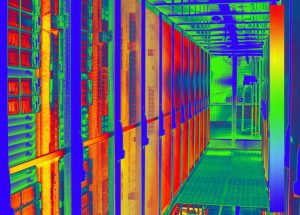
Photo Credit: www.tecservuk.com
A thermal camera shows and records 2D images of surface temperatures. Thermal cameras can detect temperatures even in the dark since they only detect the radiation coming from objects or surfaces. Thermal images are a mixture of different colors. Ranging from black to all colors of the white light. Black or darker colors indicate low temperatures. While red, orange and yellow indicate mid to high temperatures.
Many systems in your facility must be monitored with thermal imaging. The automatic transfer switches (ATS), uninterruptible power supply (UPS), and the electrical switchgear and batteries. Data center thermal imaging helps this equipment to detect irregularities and prevent problems before they lead to more expensive system failures.
Predictive maintenance with regular Data center thermal imaging provides many benefits. For one, it helps save costs from equipment failure and downtime. It also allows you to identify problems with components such as overloaded circuits or loose connections. Essentially, it prevents problems before they happen.
Thermal imaging also allows you to identify cooling issues in your facility. Hotspots can damage your servers and cabinets. It is essential to eliminate or reduce these hotspots before they bring damage to the heart of your facility. Maintaining the right temperature is the key to an efficient data center. Providing the appropriate cooling for your servers also prolongs their lifespan.
Overheating or malfunctioning components is a serious threat to your data center. This can even lead to a fire. You would want to prevent problems before a smoke, or a fire appears. Because by that time, it would be too late to prevent heavy damages.
Luckily, thermal imaging provides an early warning to detect a rapid increase in heat. Thermal cameras can detect actual surface temperatures. They can also provide preventive maintenance and proactive temperature alerts.
Thermal imaging offers a more advanced method of monitoring. Thermal images can be captured and uploaded to computers. You can utilize other software programs to have a more in-depth report and analysis. This helps you track and predict the performance of your facility.
Other Functions Of Data Center Thermal Imaging
Thermal imaging has many functions for your facility. Aside from monitoring power, cooling, and server systems. It can also help you in the following aspects.
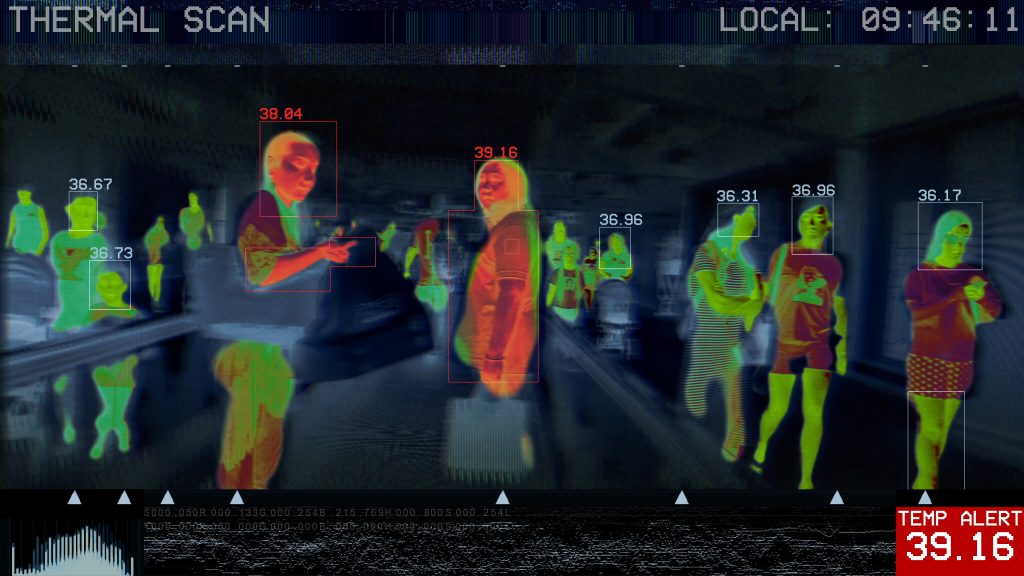
Photo Credit: resources.altium.com
-
Keeping Critical Equipment Operating
Datacenter equipment is vulnerable to overheating. On average, there are 50,000 to 80,000 servers in a facility. Manually monitoring all of these would lead to errors and more issues. Operators should opt to incorporate some thermal technology.
A radiometric thermal imaging camera can help monitor critical equipment at all times. It can be installed within switchgear cabinets. This thermal camera monitors critical components prone to overheating. It also has automated alarms that send warnings when it detects an issue.
-
Physical And Perimeter Security
The outside human threat is one of the biggest security concerns in the industry. Stealing corporate and IT data is a key issue. There are also concerns regarding damage to equipment and facilities. All these problems can sabotage a data center operation. Hence, data centers need strong physical and perimeter security.
No matter how big or small a facility is, it is vital to have a reliable security system. Surveillance is essential to detect threats across the perimeter. Thermal cameras provide a strong security system. Since this equipment relies on heat instead of light it can detect movements from low-light conditions up to total darkness or even in rainy and smokey environments. Thermal cameras ensure that no threat is unnoticed.
Moreover, thermal cameras can be used with radars. This integrated solution can make absolute target-tracking. When someone is detected by the radar, the thermal camera turns to the location of the intruder. Operators can follow the intruder’s movements. This allows them to make strategic responses.
-
Health Security
The COVID-19 pandemic causes another security concern for data centers. Facilities need staff to function. And data center staff need health security and safety from the deadly disease. Thermal cameras can also be used to detect infected staff in the workplace. So that they may prevent spreading the virus in the facility. Thermal cameras do not need direct contact to detect temperature. Hence, it also eliminates close contact between employees and guests.
Where To Scan With Thermal Imaging
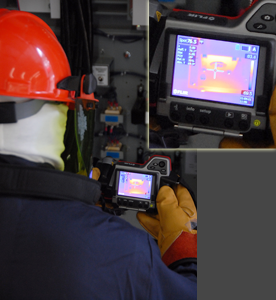
Photo Credit: hubspot.net
When using thermal imaging, it is essential to look at particular areas. Below are the equipment and areas you need to scan within your facility.
- Electric transformers
- Backup power source
- Generators
- Transfer switch
- Main switchboard
- UPS
- PDUs
- Server racks
- ACUs
- HVAC systems
- Split systems and chilled water systems
Choosing The Right Thermal Imaging For Your Data Center
Installing thermal cameras can be a more complex process. Compared to when installing a standard camera. The alarm temperature of the thermal camera must be set properly along with the other equipment and software programs that are integrated with it.
Like any other equipment, thermal cameras also vary. If you will install thermal cameras that can be integrated with other equipment and software. Consider these features that identify advanced models from regular ones.
- Interoperability – Choose thermal cameras that can be integrated with your existing data center systems.
- High Resolution – Higher resolution means higher image quality. If you need image clarity and target detection, a thermal camera with 640 x 480 thermal resolution is a good choice. This type can provide as much as 16 times more pixels than a standard thermal camera.
- Video Analytics – This feature can automatically track threats. Video verification is essential in a security solution. It reduces false alarms to make sure that no response will be wasted on false threats.
- Screening – Thermal cameras are also used to detect skin temperature. As you know, skin temperatures vary throughout the day. Use thermal cameras that can accommodate this variance.
AKCP Professional Sensor Solutions
Using infrared cameras to monitor your important equipment can be a powerful first line of defense against unplanned downtime.
AKCP created an integrated Server Room Monitoring solution in response to the need for 100% uptime reliability. This integrated system solution was created to meet the unique requirements of data center monitoring. The AKCPro Server Monitoring system delivers all the tools you need to spot problems early — before they turn into costly and potentially critical network outages — by combining advanced reliable components.
Wireless Cabinet Analysis Sensor
- Rack Maps and Containment Views
With AKCPro Server installed, dedicated rack maps displaying W-CAS data can be configured to give a visual representation of each rack in your data center. If you are running a hot/cold aisle containment, then containment views can also be configured to give a sectional view of your racks and containment aisles.
AKCPro Server
AKCPro Server can monitor and record video feeds from Integrated ONVIF compatible IP cameras and cameras attached to AKCP securityProbe base equipment. To keep an eye on any sensor events, sync sensor events with video in the playback window.
High-Resolution IR Digital Camera
Visually inspect your company’s assets and resources from anywhere in the world using your browser. The AKCP HD-DC includes infrared night vision and can record at speeds ranging from 15 to 30 frames per second, depending on the quality. Use your browser to visually analyze your corporate assets and resources from anywhere in the world with this High-Resolution Digital Camera (HD-DC). The AKCP HD-DC has been designed specifically for use with the AKCP securityProbe series. It includes infrared night vision and can shoot at speeds ranging from 15 to 30 frames per second, depending on the resolution.
High-Resolution Pan Tilt Dome Camera
The AKCP High-Resolution Pan Tilt Dome Digital Camera is designed to provide the securityProbe 5ESV and Door Control Unit devices with more capability. You can not only remotely monitor assets and infrastructure, but you can also see any problems by pairing the AKCP HD-PTDC Camera with a securityProbe 5ESV from anywhere in the world.
Conclusion
Thermography is the perfect supplement for monitoring the thermal environment of your facility. It shows the real-time thermal conditions in different areas. It is particularly essential to the power, cooling, and server systems. These delicate systems need to be constantly monitored with thermal imaging. So that operators can detect the issues that cannot be seen with the naked eye.
Reference Links:
https://www.eecnet.com/resources/articles/why-thermal-imaging/
https://www.securityinfowatch.com/video-surveillance/cameras/night-vision-thermal-infrared-cameras/article/21069817/thermal-thrives-in-data-centers
https://www.fluke.com/en-ph/learn/blog/thermal-imaging/using-thermal-imaging-in-data-centers
https://www.missioncriticalmagazine.com/articles/93161-thermal-imaging-cameras-protect-data-centers-inside-and-outside

